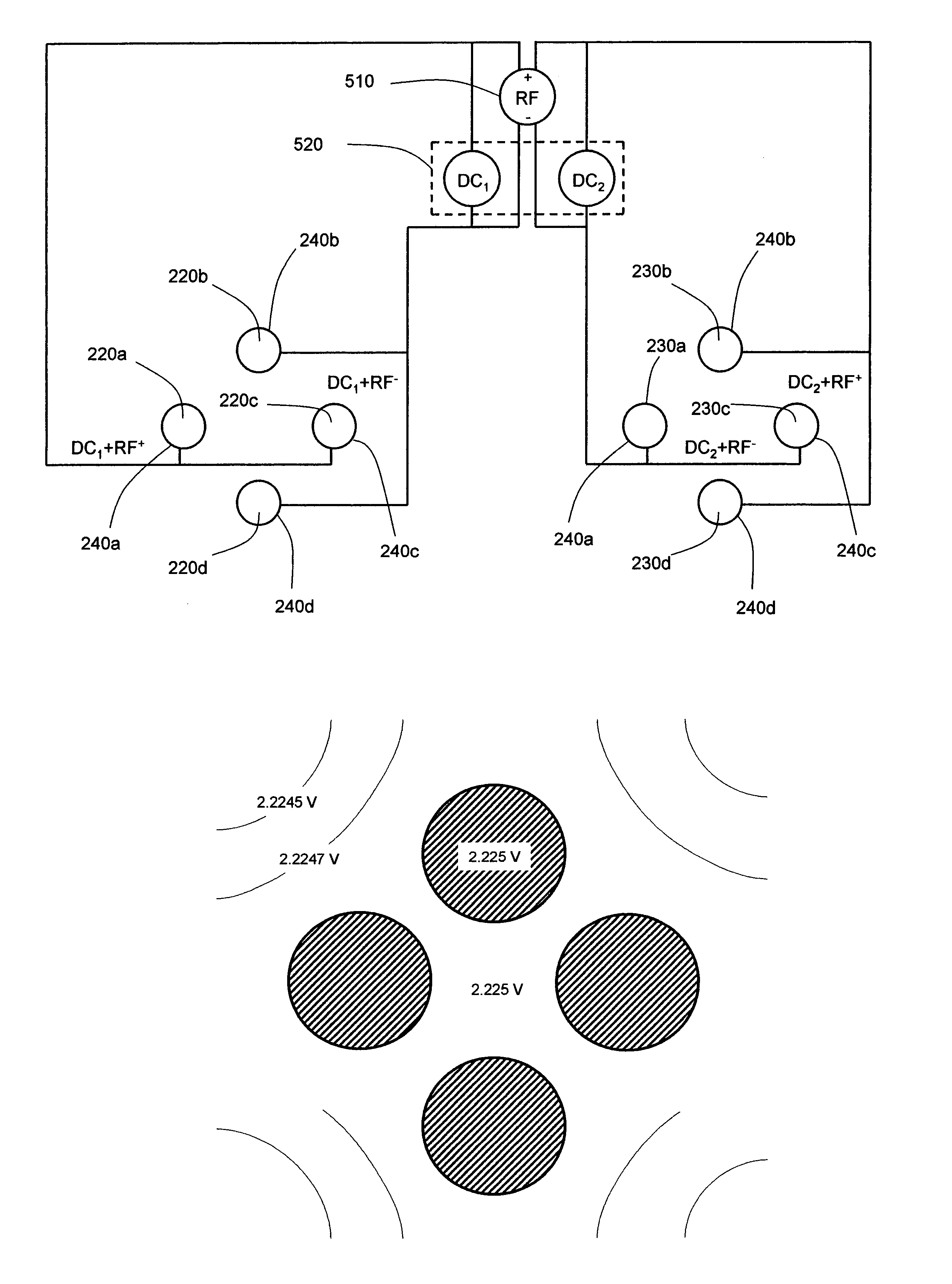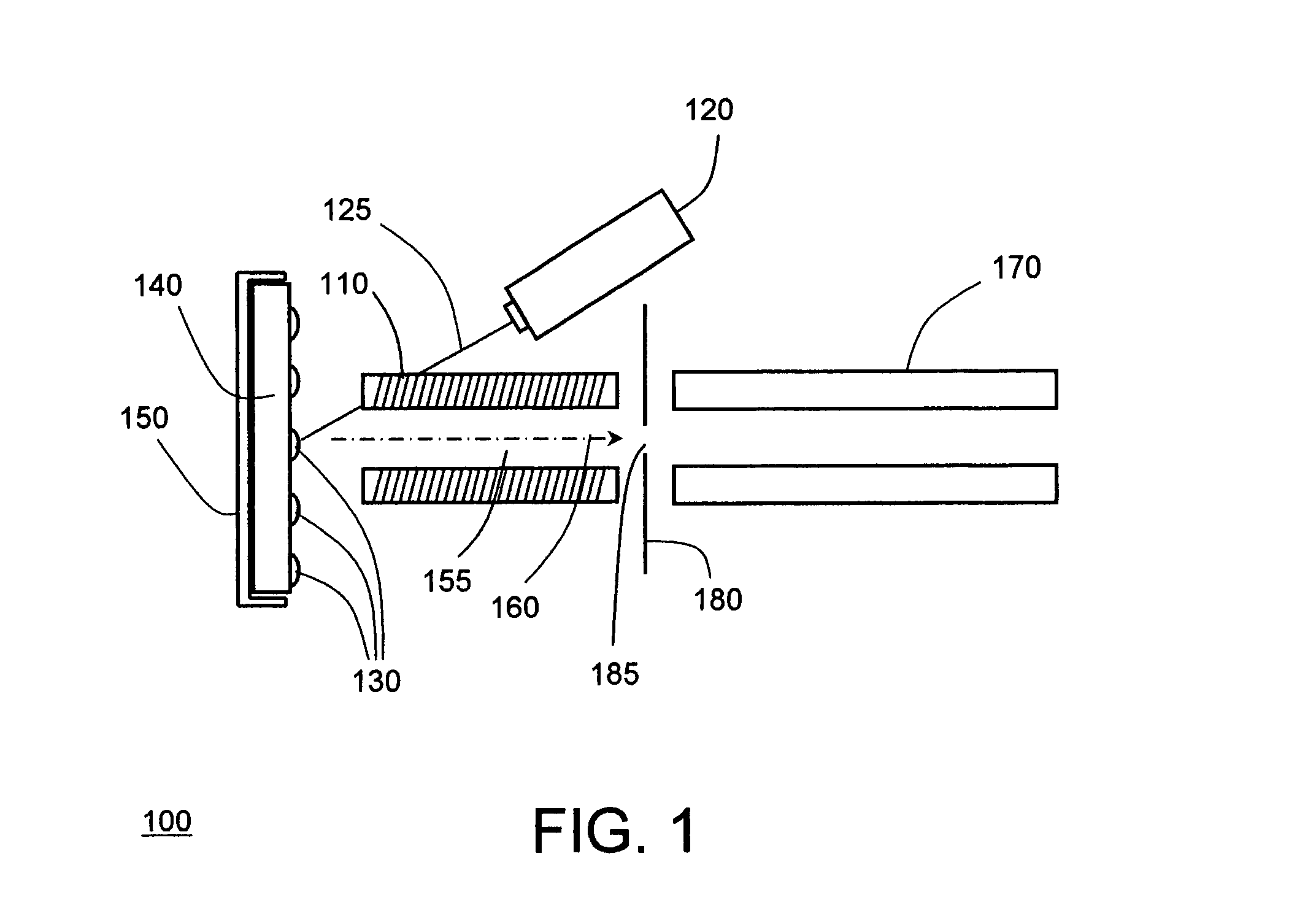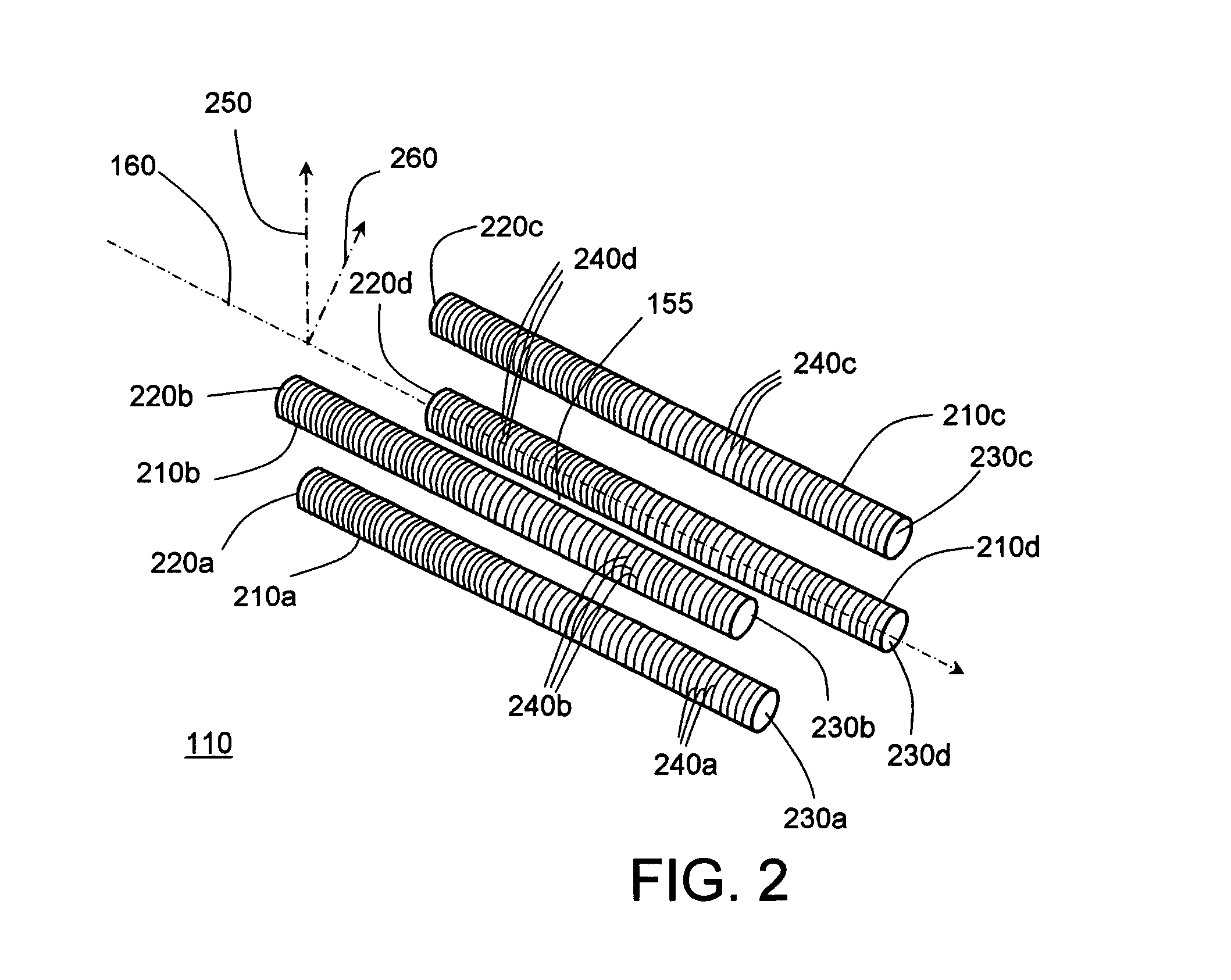Generation of combination of RF and axial DC electric fields in an RF-only multipole
a technology of axial dc and electric field, applied in the field of mass spectrometers, can solve the problems of dc potential in the radial plane orthogonal to the major longitudinal axis, affecting the performance of mass spectrometers, and compromising the operation
- Summary
- Abstract
- Description
- Claims
- Application Information
AI Technical Summary
Benefits of technology
Problems solved by technology
Method used
Image
Examples
Embodiment Construction
[0016]FIG. 1 is a schematic depiction of a MALDI mass spectrometer 100 that includes an RF-only multipole 110 constructed in accordance with an embodiment of the invention. It should be understood that mass spectrometer 100 is merely an illustrative example of an environment in which RF-only multipole 110 may be advantageously utilized, and that presentation of this example should not be construed as limiting RF-only multipole 110 to use in MALDI systems or other particular instruments or environments.
[0017]As depicted in FIG. 1, a laser 120 is positioned to direct a pulsed beam of radiation 125 onto a sample 130 disposed on sample plate 140. A translatable sample plate holder 150 carries sample plate 140 and is configured to align selected portions of sample 130 with radiation beam 125. Sample 130 will typically take the form of a crystal in which molecules of one or more analyte substances are contained, together with molecules of a material that is highly absorbent at the radiati...
PUM
 Login to View More
Login to View More Abstract
Description
Claims
Application Information
 Login to View More
Login to View More - R&D
- Intellectual Property
- Life Sciences
- Materials
- Tech Scout
- Unparalleled Data Quality
- Higher Quality Content
- 60% Fewer Hallucinations
Browse by: Latest US Patents, China's latest patents, Technical Efficacy Thesaurus, Application Domain, Technology Topic, Popular Technical Reports.
© 2025 PatSnap. All rights reserved.Legal|Privacy policy|Modern Slavery Act Transparency Statement|Sitemap|About US| Contact US: help@patsnap.com



